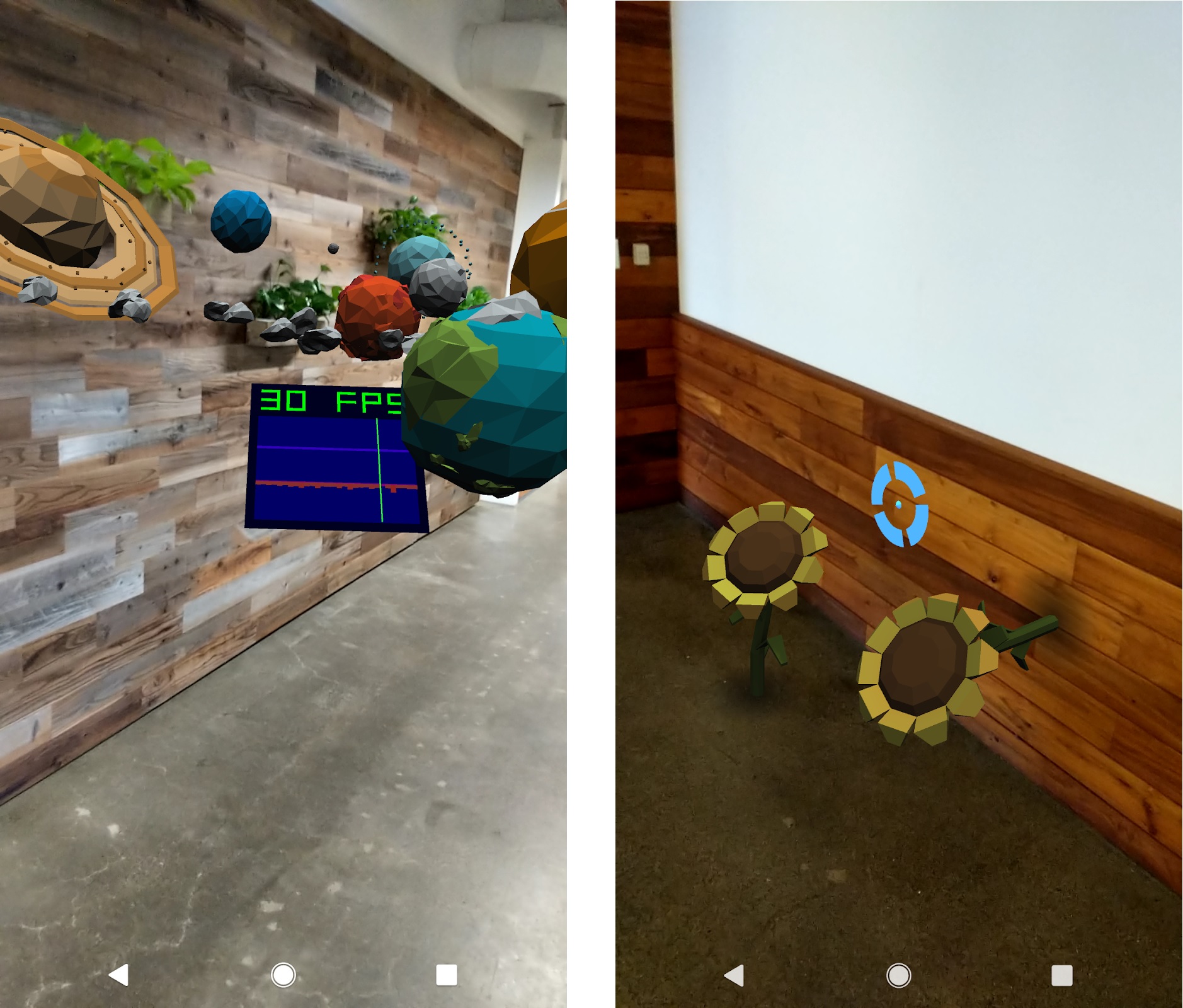
In Augmented Reality and Virtual Reality News
February 18, 2020 – Google has recently announced that as part of its Chrome 81 beta release, it has added two new immersive features to its Chrome web browser, both designed to support augmented reality. The WebXR Device API, first enabled in Chrome 79, now supports augmented reality. Google has also added support for the WebXR Hit Test API, an API for placing objects in a real-world view.
The WebXR Hit Test API provides a means for an immersive experience to interact with the real world. Specifically, it enables users to place virtual objects on real-world points in a camera view.
The image on the right above from one of Google’s Immersive Web Working Group’s sample apps illustrates this. In this particular example, the broken blue circle indicates a point returned from the hit test API. If the user taps the screen a sunflower will be placed there. The new API captures both the location of a hit test and the orientation of the point that was detected (notice in the image a sunflower has been placed on both the floor and the wall).
Developers that have already used the new API to create virtual reality will be happy to know there’s very little new to learn in order to use AR. This is because, according to Google, the spec was designed with the spectrum of immersive experiences in mind. Regardless of the degree of augmentation or virtualization, the application flow is the same. The differences are merely a matter of setting and requesting different properties during object creation.
The addition of the hit test API to Chrome browsers is somewhat significant, in that it means that Google is continuing to work towards a state wherein web-based augmented reality experiences are incorporated within the actual web browser itself.
Currently, most seamless web AR experiences (that do not require the use of an external app) are built into a website, and will function as a feature of an individual web page. However, by taking a step towards opening up the entire browser to accommodate AR as a built-in feature, it means we are one step closer to native AR across the web as a whole, and it marks an overall improvement in standards behind browser technology to accommodate webXR in general.
As well as new immersive features, the Chrome 81 beta release also includes updates to web based Near Field Communication, or ‘Web NFC’, and Google’s Web NFC will now allow browsers to read and write NFC tags. NFC is the use of short-range wireless technology for transmitting small amounts of data, usually between a specialized NFC device and a reader, and is the technology that lies behind wireless transactions such as Android Pay and Apple Pay.
Speaking of Apple, Google is not the only company updating its browsers to be more accommodating of webXR experiences – Apple also has its own browser-based AR extension, called Quick Look, which is a feature of its Safari browser. Quick Look was first brought out in 2018, with the release of ARKit 2, but has again recently been in the headlines as the company has started to allow developers to add their own customizable actions into web AR experiences.
The moves of both companies in this direction can only signify a positive step towards ubiquitous web based AR and VR experiences, and an overall maturing of the ecosystem that will allow for XR interactions to enter mainstream usage and become ever more present as part of our daily interactions with technology.
Chrome users that want to try out the new features can do so by downloading the Chrome Beta browser.
Image credit: Google Chromium Blog
About the author
Sam is the Founder and Managing Editor of Auganix. With a background in research and report writing, he has been covering XR industry news for the past seven years.
